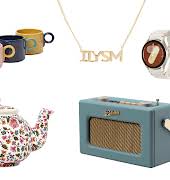
A picture paints a thousand words: the power of clothes throughout history
By Marie Kelly
10th Nov 2018
10th Nov 2018
The image we create through the clothes we wear is an enormous, and powerful, part of our personal narrative, says Marie Kelly.
Last year, then creative director of French fashion house Celine Phoebe Philo revealed to The New York Times that “Images of women being… beautified, sexualised and shown like dolls… has had an impact on me, as I believe it has on us all.” Before “modest dressing” became part of the cultural zeitgeist, Philo was sowing the sartorial seed with collection after collection of fluid, elegantly draped pieces defined by their high necklines and long hemlines.
Celine’s models were never trussed up in bandage style dresses or forced to balance precariously on vertiginous heels (remember Naomi Campbell’s catwalk trip-up in 1993 wearing those outrageously high Vivienne Westwood platforms? Or Carrie Bradshaw’s face-first fall in Sex and the City?). Instead, they strutted confidently down the catwalk in pieces that helped rather than hindered their movements. It was the modern-day equivalent of corsets being banished in favour of drop-waist dresses. Philo may have been one of the first designers to offer a fresh definition of what we consider attractive and sexy, but she’s certainly not the only designer doing so today.
Victoria Beckham’s journey, both professionally and sartorially, is a pretty accurate snapshot of how women can use clothes to take control of and change their own narrative; in this case, Beckham has redefined herself as a smart, chic businesswoman instead of a fashion puppet and paparazzi fodder. Her clothing label is now one of the most influential in the world.

Victoria Beckham AW18 catwalk show, Jason Lloyd Evans
Clothes have always been a tool of self-expression for women, sometimes the only one available to them. The late Princess Diana, for example, was artful in how she used her wardrobe to tell her own story. I remember in the 1980s, she wore a sweater with the slogan “I’m A Luxury” emblazoned across the front, while forlornly pushing her two young sons on a swing in the garden of Kensington Palace. It said so much about where she was in her life at that time. Her relationship with Prince Charles had broken down, and Diana, who had little or no voice in those early years of her Royal marriage, was sending out a strong message to her husband with this sweater, and perhaps trying to persuade herself of the sentiment’s truth. This is an example of what scientists are now calling “enclothed cognition” – here comes the science bit… “This involves the occurrence of two independent factors – the symbolic meaning of the clothes and the physical experience of wearing them.” In other words, when we pull on an item of clothing, we adopt some of the characteristics associated with it. So when Diana arrived at the Serpentine Gallery in 1994 wearing the now iconic, show-stopping LBD by Greek designer Christina Stambolian, she looked happier, more confident and self-assured than ever before, despite the fact that Charles’ affair with his now-wife Camilla had been publicly exposed earlier that week. It’s the sartorial answer to fake it ’til you make it.
“It’s ironic that the kinds of clothes which felt inhibiting to women of Countess Markievicz’s generation are a symbol of liberation today.”
In Ireland, many prolific women have shown the power of fashion to, not just further their own cause, but encourage broader endeavours too, and how enclothed cognition existed long before it was defined. On October 27, the National Gallery of Ireland will unveil an exhibition of paintings, photography, illustration and film of the 20th-century revolutionary and suffragette Countess Markievicz, who fought in the 1916 Rising. She’s quoted as saying, “Dress suitably in short skirts and strong boots, leave your jewels in the bank and buy a revolver.” But Markievicz didn’t just talk the talk, she wore the clothes. Several of the images included in the gallery’s exhibition reveal self-styled portraits of the revolutionary in full military uniform. Markievicz instinctively understood how important and empowering the right clothes can be, and how they can also influence others’ perceptions of you. Markievicz lived and fought in a man’s world and she cleverly used clothes to help her assimilate.
More recently, Irish actress Ruth Negga has been attributed with helping to change the sartorial playing field for women by bringing modesty dressing beyond the pavements and onto the red carpet. At the 2017 Academy Awards, she wore a statement red Valentino gown, but unlike the plunging column gowns and beaded mermaid dresses that have defined red carpet dressing for so long, Negga was covered from chin to toe and from shoulder to wrist. Apparently, she loves sleeves, and she obviously wasn’t going to rewrite her own sartorial story to fit in with a tired old stereotype. Isn’t it ironic that the kinds of clothes that felt inhibiting and constraining to women of Countess Markievicz’s generation (long skirts and high necklines) have become a symbol of liberation for women of our generation?

Head and shoulders, facing right portrait of Countess Marckievicz in uniform
According to Beckham – the woman who was once a slave to bodycon fashion – a looser silhouette “puts power back in the hands of the wearer rather than the observer.” If you want to rewrite your own narrative and embrace this new “power dressing”, then take inspiration from Beckham’s AW18 collection, as well as Calvin Klein, Michael Kors and Stella McCartney to name a few. Sleeves, midi- and maxi-length skirts, collars, polo necks and stockings, layered for comfort as well as style, will inject confidence and character into your wardrobe. Looking and feeling not just confident, but capable, in the clothes you wear is the strongest fashion statement of all.

Calvin Klien, AW18 catwalk show, Jason Lloyd Evans























